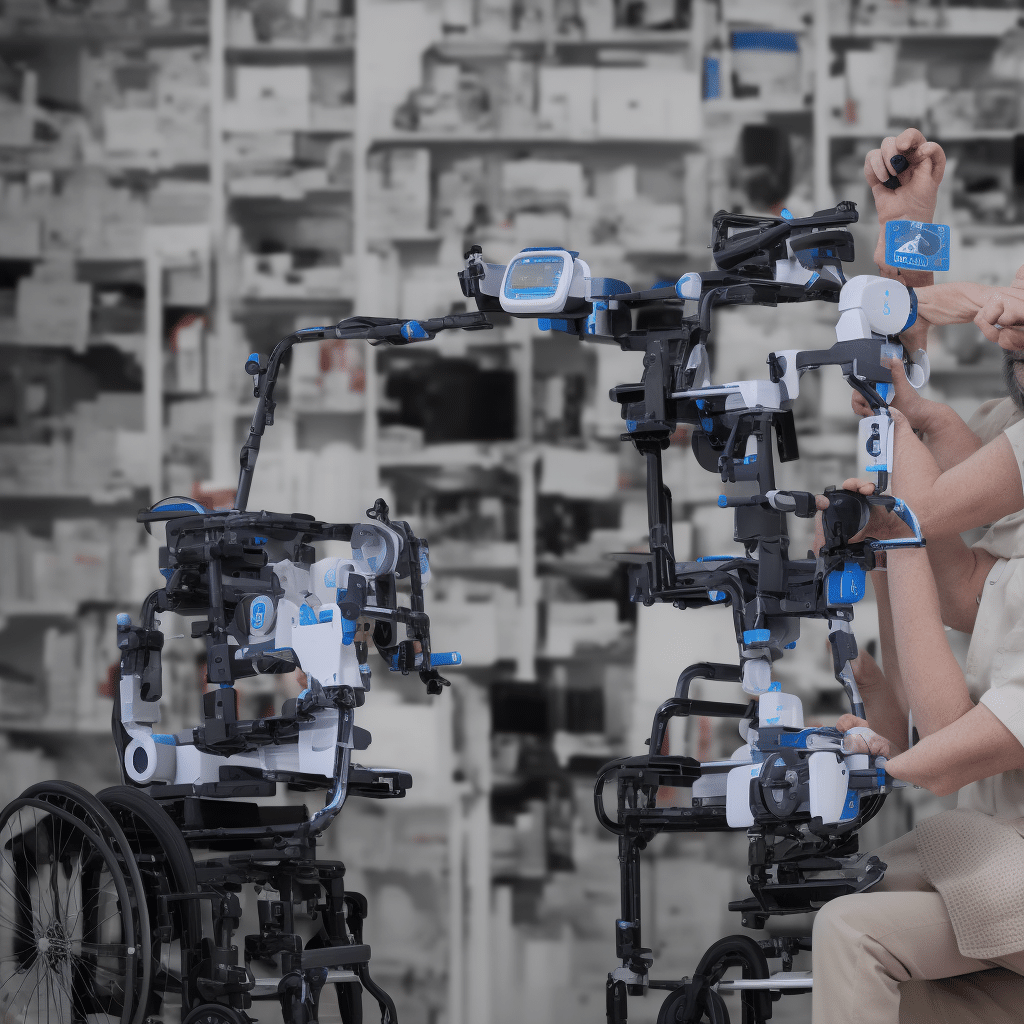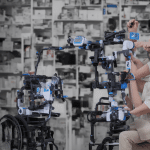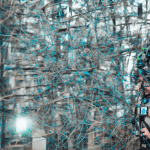AI-powered assistive technology is becoming a game-changer for individuals living with disabilities, particularly visual impairments. Technology has the potential to significantly enhance accessibility and mobility, making a world of difference in the lives of those who often encounter hurdles in their daily life. From speech to text conversion, data processing, content adaptation, and more, let’s delve into how these amazing technologies are reshaping the world for people with visual impairments.
The Role of AI in Assistive Technology
Artificial intelligence (AI) has been a revolutionary force in many areas, and assistive technology is no exception. Its applications are diverse and powerful, providing a new level of accessibility for those living with visual impairments.
Dans le meme genre : What Innovations Are Driving the Future of Clean and Renewable Energy Sources?
AI algorithms can process massive amounts of data in real time, helping to interpret and adapt the world for visually impaired individuals. It can convert text to speech, identify objects and hazards, and even assist in navigation. Furthermore, these technologies can be implemented in a variety of devices, from smartphones to smart glasses, making them accessible and easy to use for many.
Text to Speech Conversion
One of the most common applications of AI in assistive technology is text to speech conversion. This feature allows visually impaired individuals to ‘read’ digital content by having it read aloud to them. It can be used to read out emails, documents, web pages, and much more.
Avez-vous vu cela : What Are the Advances in Wearable Tech for Monitoring Environmental Exposure?
The power of AI lies in its ability to convert complex, unstructured data into meaningful information. For example, it can identify and ignore irrelevant data, such as ads on a webpage, providing a clear, uninterrupted reading experience.
Object and Hazard Identification
Another critical aspect of AI-powered assistive devices is their ability to identify objects and potential hazards. This can significantly improve the safety and mobility of visually impaired individuals, giving them more independence in their daily life.
Using advanced image recognition algorithms, these devices can identify objects and obstacles in the user’s path and relay this information through audio cues. This can help prevent accidents and improve navigation, especially in unfamiliar environments.
AI-Powered Devices for the Visually Impaired
There’s a wide range of AI-powered devices that provide accessibility solutions for people with visual impairments. These range from simple smartphone apps to more advanced hardware solutions, each offering unique benefits.
Smartphones and Tablets
Smartphones and tablets are often the most accessible and affordable option for individuals with visual impairments. They come with built-in accessibility features, such as voice assistants and text to speech, and can be further enhanced with a wide range of accessibility apps.
Many of these apps use AI to offer advanced features, such as real-time object identification, text recognition, and more. For example, apps like Seeing AI and Lookout can identify text, objects, and even people, providing auditory feedback to the user.
Smart Glasses
While smartphones offer a degree of mobility and independence, they do have their limitations. This is where smart glasses come in. Designed to be worn like regular glasses, these devices provide a hands-free experience and can offer a deeper level of interaction with the environment.
Smart glasses like Envision Glasses and OrCam MyEye use AI to provide real-time information about the user’s surroundings. They can read text, identify objects, recognise faces, and even assist with navigation, making them a powerful tool for visually impaired individuals.
The Future of AI and Assistive Technology
The field of AI and assistive technology is constantly evolving, with new advancements on the horizon that promise to offer even greater levels of accessibility and independence for people living with visual impairments.
One such advancement is the development of AI algorithms that can ‘learn’ and adapt to the individual user’s needs and preferences. This could result in devices that are not only more effective but also more personalised and intuitive to use.
Another exciting prospect is the integration of AI with other technologies, such as virtual and augmented reality. This could offer visually impaired individuals a new way to interact with the world, providing a more immersive and engaging experience.
Though there are many challenges to overcome, the potential is immense. With continued research and development, AI-powered assistive devices can significantly transform the lives of those living with visual impairments, making the world a more accessible place for all.
AI and Navigation Assistance
AI technology is not only transforming how visually impaired individuals interact with their immediate surroundings, but it’s also revolutionizing the way they navigate the world at large. From travel apps to smart canes, AI-powered devices are paving the way for enhanced mobility and independence.
Navigation apps like Soundscape and BlindSquare utilize AI to provide visually impaired users with detailed audio cues about their environment. These apps describe the environment and provide directions in real-time, helping users navigate unfamiliar terrain with ease. These AI-powered apps make use of the GPS and compass of smartphones to create a rich and immersive exploration experience.
Meanwhile, smart canes and wearable devices offer another layer of navigation assistance. Products like WeWALK smart cane use ultrasonic sensors to detect obstacles above chest level and vibrate to alert the user. The cane can also pair with smartphones to utilize AI-enabled apps for navigation, thus, integrating physical and digital assistance.
Lastly, self-driving cars, though still in the infancy stage, hold great promise for the visually impaired. Powered by AI and machine learning, these vehicles could eventually provide visually impaired individuals with unprecedented levels of mobility, breaking down significant barriers and further promoting independence.
AI in Education and Employment for the Visually Impaired
AI technology is also making strides in the realm of education and employment for visually impaired individuals. Assistive tools powered by AI are opening doors to new learning and career opportunities that were previously inaccessible.
AI-powered educational tools like Microsoft’s Learning Tools use features like Immersive Reader and dictation to make learning more accessible for visually impaired students. These tools can read text aloud, highlight as it reads, and even break words into syllables, making it easier for students to comprehend and retain information.
In terms of employment, AI is breaking down barriers by making workplace technology more accessible. AI-powered software can now convert complex data into auditory or tactile formats, making it possible for visually impaired employees to handle tasks such as data analysis.
Moreover, AI-powered recruiting tools are also helping to level the playing field. For instance, tools like IBM’s AI-powered Watson are being used to analyze job descriptions for bias and ensure fairness in the recruitment process, thus opening up more opportunities for visually impaired individuals.
Conclusion
Artificial intelligence is undoubtedly transforming the lives of individuals living with visual impairments. From enhancing daily living and mobility to promoting education and employment opportunities, AI-powered assistive devices are breaking down barriers and promoting a more inclusive society.
The future of AI in assistive technology is promising, with continuous advancements furthering the cause of accessibility. As AI continues to evolve and intertwine with other technologies like virtual reality and machine learning, the possibilities for people living with visual impairments continue to expand.
While challenges remain, the potential of AI-powered assistive devices is vast and exciting. By fostering inclusivity and breaking down barriers, AI is helping to create a world that’s accessible to everyone, regardless of their visual capabilities. As we move forward, it’s clear that AI will continue to play a pivotal role in reshaping the world for individuals with visual impairments.











